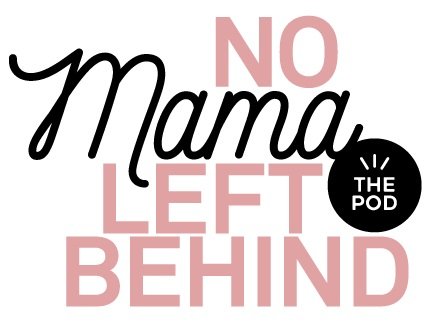Put Your Baby in the Basket
Season 1 Episode 2
Welcome back Mamas to episode two of No Mama Left Behind. Today is Marcy’s day—Marcy has the (pelvic) floor. First, she talks about her family’s first trip since COVID began. They packed up and went to Atlanta. Alyson shares a little bit about her experience traveling with her 18 month old daughter. There are no rules when it comes to flying with children, and we agree that they can have as much screen time as you can tolerate because traveling with kids is hard as fuck. No rules, Mama. Whatever it takes to survive.
Okay, back to the meat and potatoes of this episode, as Alyson refers to it. We all want to know about the pelvic floor muscles and why they are important for Mamas and birthing persons. There's a ton of misconception out there about these muscles specifically and how they work for us it during everyday life, and during pregnancy and birth. So we thought it would be helpful to just kind of do like a quick rundown of where the hell they are.
The Pelvic Floor refers to a group of muscles—many many layers of muscles. If you are going to stop the flow of urine, or hold in a fart during a meeting, you are using your pelvic floor muscles. So these muscles sit at the bottom of your pelvis, like a basket or like a hammock, and they go from front to back. The pubic bone that's right in the front, kind of like right where your pubic hair is—these muscles attach to the backside of that pubic bone and then they sling backwards to your tailbone. And then they go side to side from your sit bones. So, they're really like, like a basket or like a hammock that kind of sit down in that area. And the cool thing about these muscles is that they are made of skeletal muscle, which is the same stuff as like your bicep or your hamstring or your neck muscles or your abs.
These are muscles that we have voluntary control over versus like cardiac muscle that's in your heart or other types of smooth muscle that has a different sort of makeup. So skeletal muscle has a very specific physiologic makeup that allows it to contract and relax in certain ways.
Because these muscles are made up of the same stuff, they can be injured the same way as other muscles. They also respond to training the same way that other muscles do. So. for example, if you have shin splints, or if you have soreness in your arms from doing too much weights at the gym, that same type of injury can happen in your pelvic floor muscles. However, it will manifest as different types of injuries, like bowel and bladder problems, or sexual pain or leaking urine.
Yeah, and who wants to say their butthole hurts? We're trying to, like, bust through those stigmas, because we talk about it often— how the muscles that make up our pelvic floor are like a bicep and we can talk about our bicep. Why can't we talk about our rectum?

